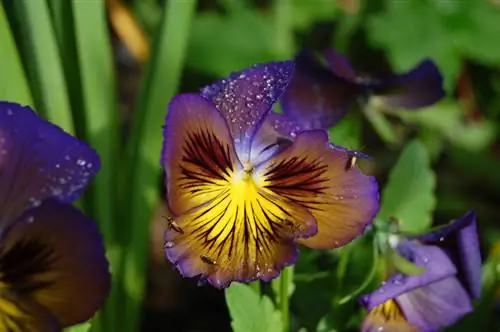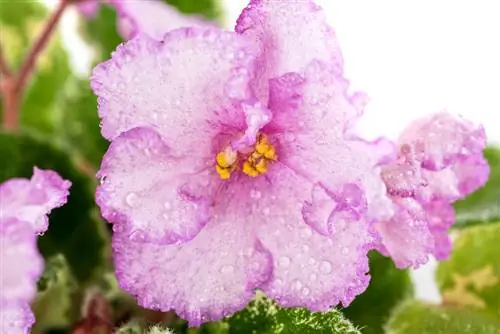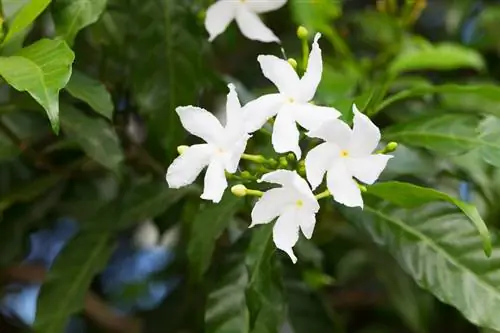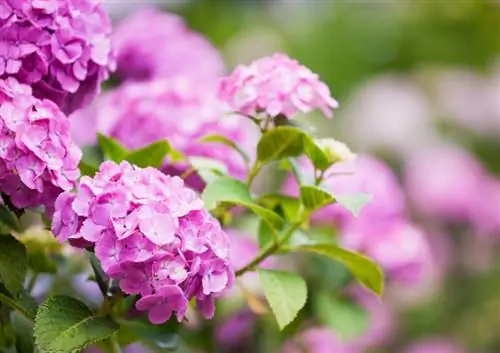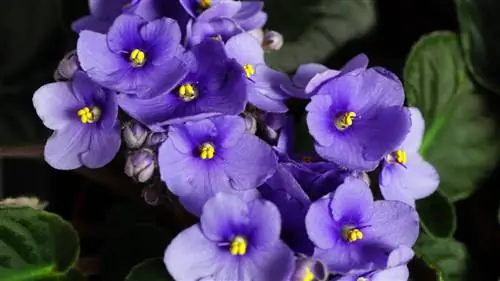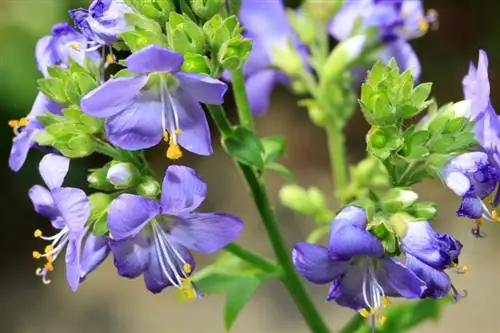- Author admin [email protected].
- Public 2023-12-16 16:46.
- Last modified 2025-01-23 11:20.
Violets appear fragile, exude an aromatic scent and are pleasing to the eye. Is it true that they hardly require any care or are tact and a 'green thumb' required when handling them?
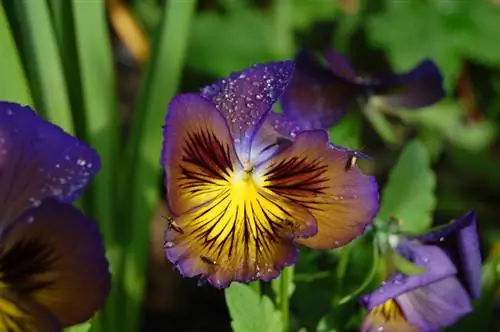
How do you properly care for violets?
Violets require simple care: water them regularly after planting and during drought, fertilize if necessary and cut off wilted leaves. They are wintergreen, reproduce independently and can resist pests and diseases.
Do violets need an extra portion of watering water?
After planting, violets should be watered regularly for the first few weeks if they are outdoors and there is no rain. Otherwise, watering is only important if the drought persists. If the soil is kept slightly moist, for example with rainwater or pond water, the flowering is increased and the scent is perfected.
Should you fertilize violets, if so with what?
Basically, it is not necessarily necessary to fertilize violets in the bed. However, the prerequisite for this is that they have been planted in a nutrient-rich substrate. If they have been standing in the same place for years, it is recommended to add fertilizer in the form of mature compost in the spring. A good side effect: the scent of flowers becomes stronger.
Violets in pots, however, should be regularly supplied with nutrients. Special organic liquid fertilizers (€12.00 on Amazon) are suitable for all those who want to eat the violets. Otherwise, conventional complete flower fertilizer can be used.
When and how are violets cut?
Violets don’t need to be cut either. They are wintergreen and remain vital and vigorous without pruning. You could only remove the wilted leaves regularly if they bother you. It is best to place these on the root area straight away. There they act as a natural fertilizer.
If you want to use the flowers as cut flowers or eat them, you can pick or cut them off. They should have already blossomed. Violets tolerate cutting extremely well. But unfortunately the cut flowers don't last long in a vase.
Which diseases and pests can be dangerous?
The following diseases and pests can affect violets and cause you harm:
- Downy mildew (when there is a lot of moisture)
- Violet Rust
- Snails (especially young shoots)
- Spider mites (in heat and drought)
- Violet mosquitoes
How can violets be propagated?
Violets like to reproduce themselves via their seeds and runners. Propagation can be targeted by division or sowing in the spring.
Tips & Tricks
Once grown outdoors, Viola can usually be left to its own devices.

